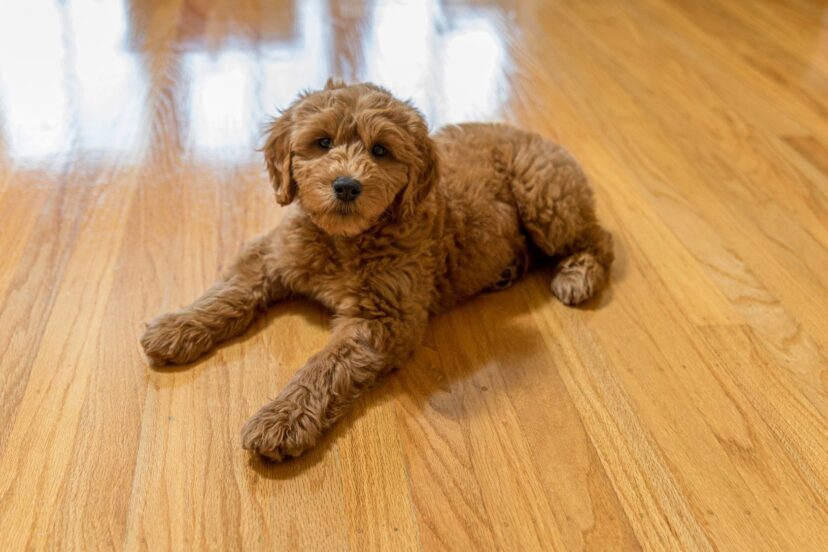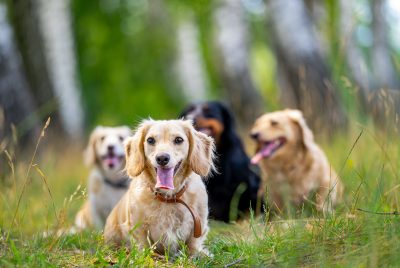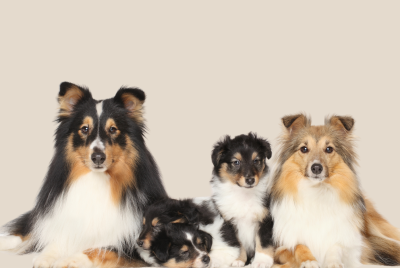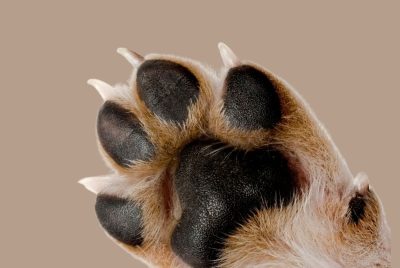When Do Goldendoodles Go Into Heat: Sign and Symptoms
If you’re the proud parent of a Goldendoodle, you may be wondering when your furry friend will have her first heat cycle. Goldendoodles usually experience their first heat around six months old, but this can vary based on numerous factors.
Our guide will provide an in-depth look at everything from understanding the stages of the heat cycle to managing care and potential breeding. Don’t worry – we’ve got all your burning questions covered.
Goldendoodle Heat Cycle
Goldendoodles typically go into heat for the first time between the ages of six to twelve months. The heat cycle, also known as estrus, can last anywhere from two to four weeks. It consists of four stages: proestrus, estrus, diestrus, and anestrus.
When Do Goldendoodles Go Into Heat?
Goldendoodles generally experience their first heat cycle between six months to a year old. This initiation into reproductive maturity can occur twice a year, with each cycle lasting several weeks.
In Miniature Goldendoodles, this may happen at slightly different ages compared to their standard-sized counterparts. Throughout these cycles, owners can expect changes in behavior and physical symptoms indicative of the process.
The decision to spay before the first heat cycle is an option that could prevent certain health issues and unwanted pregnancies.
How Long Does a Goldendoodle Season Last?
A Goldendoodle season typically lasts for a few weeks. This is the period when a female Goldendoodle goes into heat and is receptive to mating. During this time, she may exhibit changes in behavior and physical symptoms as her body prepares for a potential pregnancy.
It’s important to be aware of the length of this season so that proper care can be provided to the Goldendoodle during this time.
Stages of The Heat Cycle (Proestrus, Estrus, Diestrus, Anestrus)
The heat cycle in a female Goldendoodle consists of four distinct stages:
- Proestrus: This is the initial stage of the heat cycle and can last for about 9 to 14 days. During this time, the female Goldendoodle may experience some swelling and discharge. However, she will not be receptive to mating.
- Estrus: This is the fertile period of the heat cycle and usually lasts for about 5 to 10 days. The female Goldendoodle is now receptive to mating and may display more affectionate behavior towards male dogs. It’s important to closely monitor her during this stage if you are not planning on breeding her.
- Diestrus: Following estrus, the female Goldendoodle enters diestrus, which typically lasts for around 60 to 90 days. During this stage, the reproductive organs return to their normal state, and the dog is no longer receptive to mating.
- Anestrus: Anestrus is a period of rest between heat cycles and can last for several months. The reproductive system rests during this time until the next heat cycle begins.
Signs of a Goldendoodle in Heat
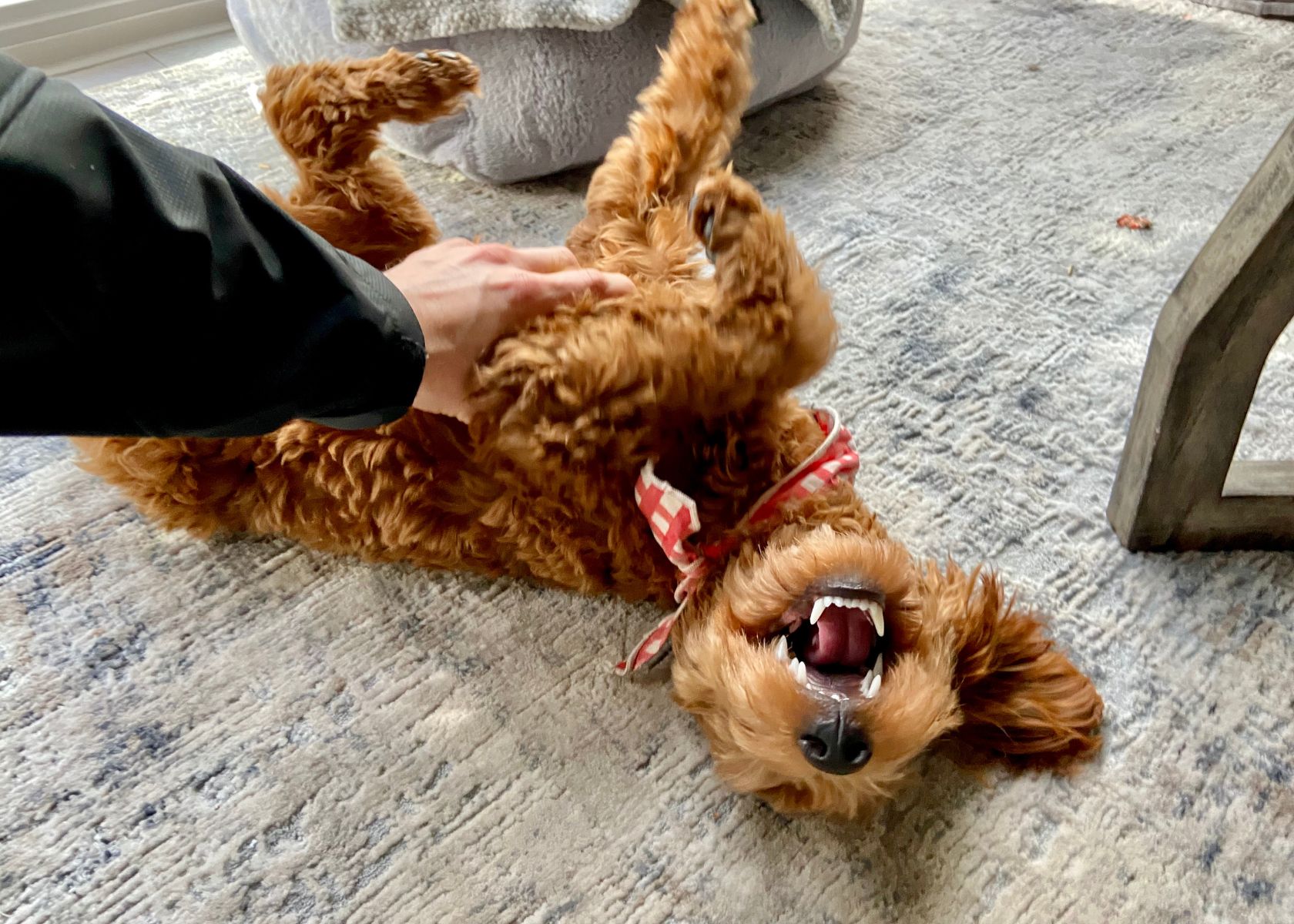
Goldendoodles in heat may exhibit signs such as unexpected aggression, changes in appetite, marking and roaming behavior, and overall changes in their usual behavior.
Unexpected Aggression
During a Goldendoodle’s heat cycle, one of the signs you may notice is unexpected aggression. This can be attributed to hormonal changes that occur during this time. As the levels of estrogen and progesterone fluctuate, it can affect your Goldendoodle’s behavior and temperament.
They may become more protective or territorial, displaying aggression towards other dogs or even humans. It’s important to understand that this behavior is temporary and will subside once their heat cycle is over.
Changes in Appetite
During a Goldendoodle’s heat cycle, you may notice changes in their appetite. Some female Goldendoodles may experience a decrease in appetite during the initial stage of the heat cycle, known as proestrus.
This is due to hormonal changes happening within their bodies. On the other hand, some females may show an increase in appetite during the later stages of the heat cycle, especially during estrus.
It’s important to monitor your Goldendoodle’s eating habits and adjust their meals accordingly to ensure they are getting proper nutrition and maintaining a healthy weight throughout this time.
Marking and Roaming
During the heat cycle, a female Goldendoodle may engage in marking and roaming behaviors. This is because her hormones are fluctuating, causing changes in her scent and making her more attractive to male dogs.
Marking involves urinating on objects or territory as a way of leaving her scent behind to communicate with other dogs. Roaming refers to the desire to escape from home in search of a mate.
It’s important for owners to be aware of these behaviors and take necessary precautions, such as ensuring their Goldendoodle is always supervised or kept securely fenced during this time.
Changes in Behavior
During the heat cycle, a female Goldendoodle may experience changes in behavior. This can include increased restlessness, attention-seeking behavior, and even more affectionate or clingy tendencies.
Additionally, some female Goldendoodles may become more agitated or easily irritated during this time. These changes in behavior are due to hormonal fluctuations that occur as part of their reproductive process.
It’s important to provide comfort and understanding during this period and adjust their exercise routine accordingly to keep them safe and secure. Regular grooming and hygiene practices should also be maintained to ensure their well-being while they go through these behavioral changes during the heat cycle.
How to Care for a Goldendoodle in Heat?
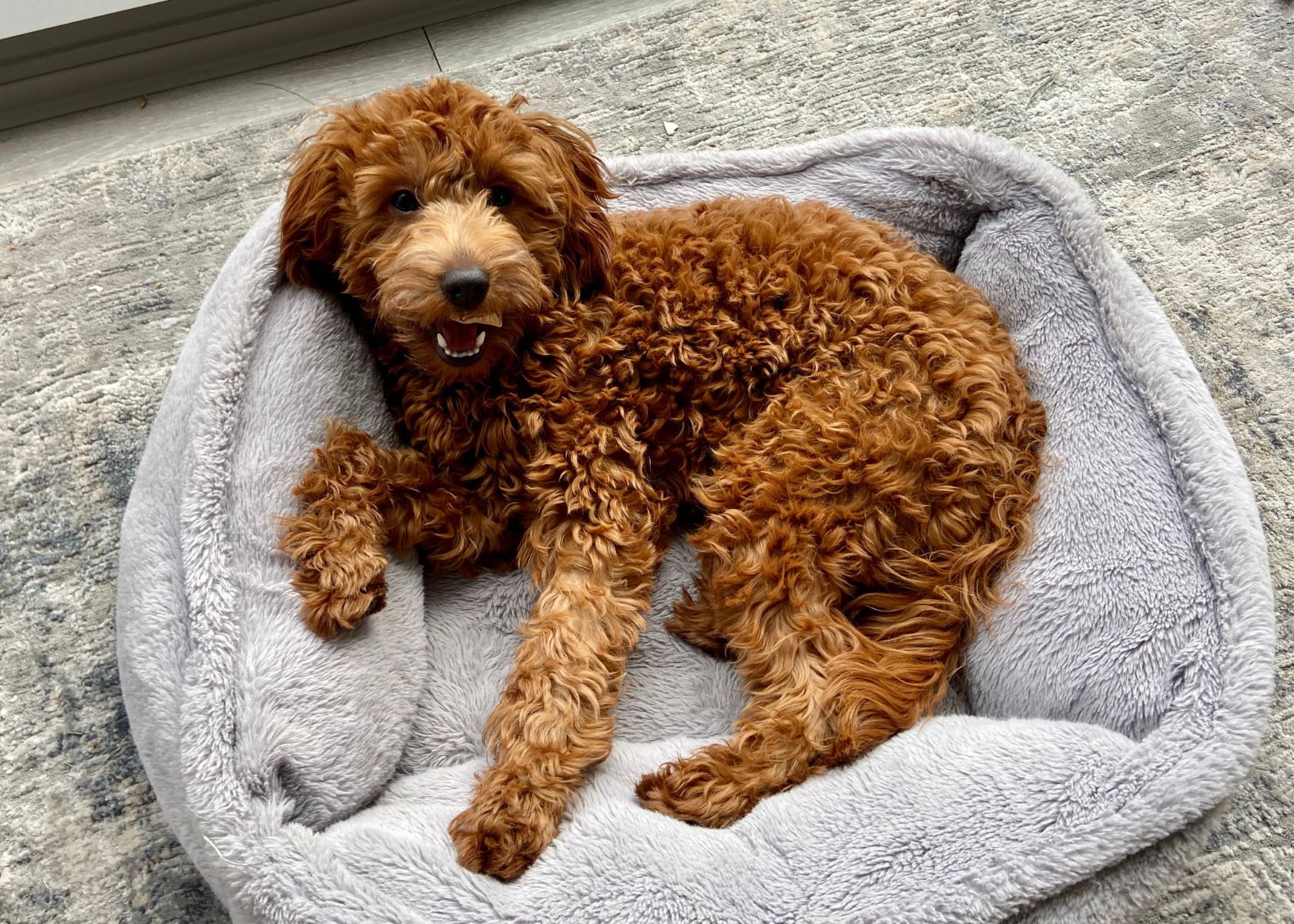
Provide comfort and rest for your Goldendoodle during their heat cycle by creating a quiet and cozy space for them to relax.
Providing Comfort and Rest
Goldendoodles in heat may experience discomfort and fatigue, so it’s important to provide them with a comfortable and restful environment. Create a cozy space where your Goldendoodle can relax away from any excessive noise or activity.
Provide soft bedding for her to lie on and make sure she has access to fresh water at all times. Additionally, avoid strenuous activities that could cause unnecessary stress during this time.
By prioritizing her comfort and providing a calm atmosphere, you can help your Goldendoodle navigate through her heat cycle more comfortably.
Regular Grooming and Hygiene
Regular grooming and hygiene are important for a Goldendoodle in heat. Here’s what you need to do:
- Brush your Goldendoodle’s coat daily to remove loose hair and prevent matting.
- Keep the genital area clean by gently wiping it with warm water or using dog-safe wipes.
- Trim the fur around the genitals to prevent urine or discharge from getting trapped in the hair.
- Bathe your Goldendoodle regularly, but avoid bathing her during the heat cycle as it can interfere with her natural scent.
- Use dog-friendly products for grooming to avoid any skin irritations or allergies.
- Keep your Goldendoodle’s bedding clean and fresh to provide comfort during this time.
Managing Behavior and Exercise
To care for a Goldendoodle in heat, it is important to manage their behavior and exercise. Here are some tips to help:
- Keep your Goldendoodle on a leash during walks to prevent them from wandering and potentially encountering male dogs.
- Avoid taking your Goldendoodle to places where other dogs congregate, such as dog parks or busy sidewalks.
- Provide mental stimulation through puzzle toys or training exercises to keep your Goldendoodle occupied and less likely to display restless behavior.
- Create a comfortable and quiet space for your Goldendoodle to rest and relax, as they may experience fatigue during their heat cycle.
- Monitor their interactions with other pets or family members, as changes in hormones can sometimes lead to unexpected aggression.
- Stick to a regular exercise routine, but adjust the intensity and duration based on your Goldendoodle’s comfort level.
Managing Goldendoodle Breeding
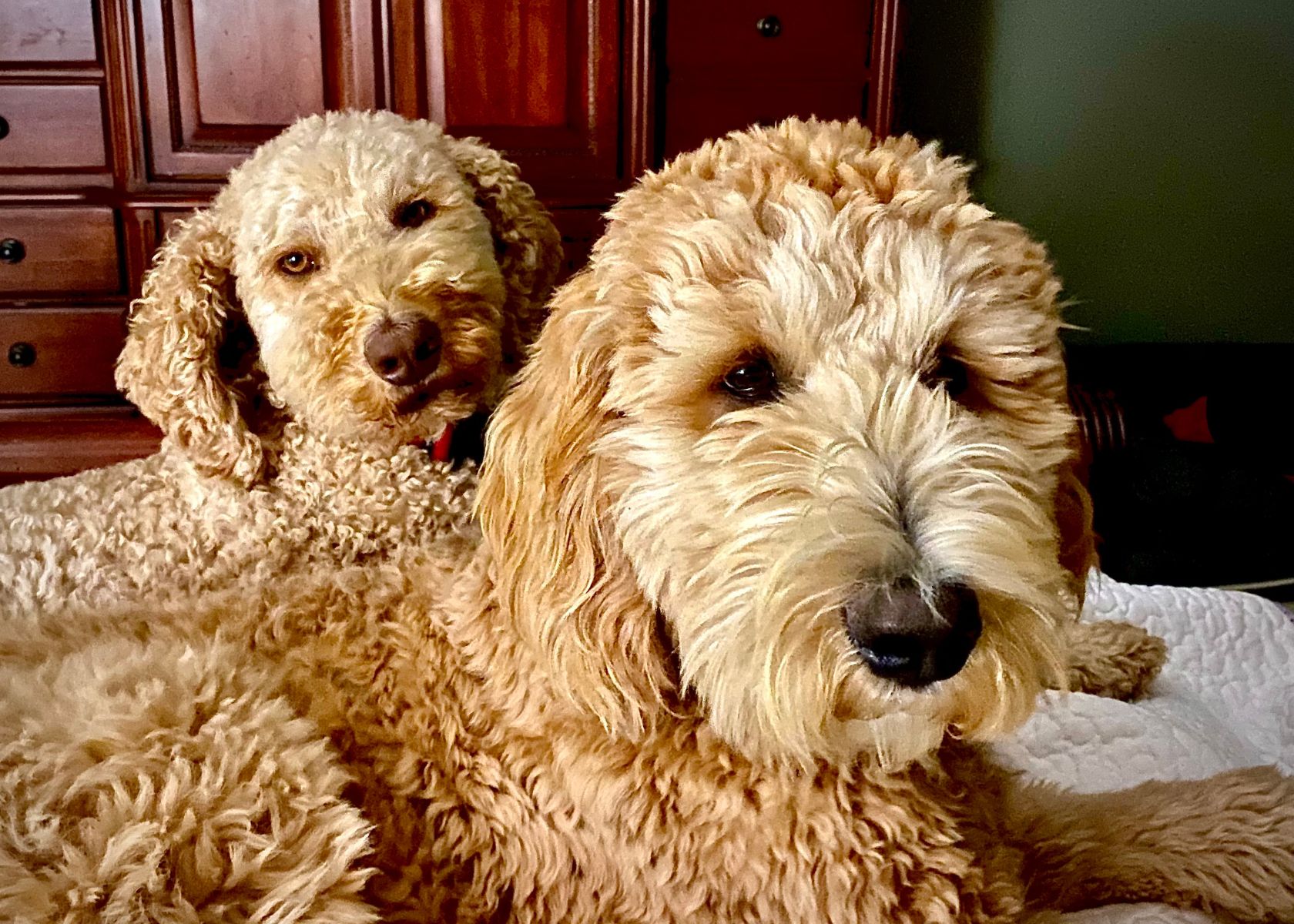
To ensure responsible breeding, it is important to consider the risks and responsibilities that come with breeding Goldendoodles. One option to prevent unwanted pregnancies is spaying or neutering your Goldendoodle.
Responsible breeding practices should also be followed, such as conducting genetic testing and only breeding dogs with good health and temperament.
Considering the Risks and Responsibilities
Owning a female Goldendoodle comes with certain risks and responsibilities when it comes to managing their heat cycle. One important consideration is the potential for unwanted pregnancies if your Goldendoodle interacts with intact male dogs during her season.
It’s crucial to keep a close eye on her and take necessary precautions, such as keeping her securely fenced or supervised when outside. Additionally, there are health risks associated with not spaying your Goldendoodle before her first heat cycle, including an increased risk of pyometra, a potentially life-threatening infection of the uterus.
Taking these risks into account, responsible breeding practices and spaying options should be carefully considered to ensure the well-being of your beloved pet.
Spaying and Neutering Options
- Spaying a female Goldendoodle before her first heat cycle can help prevent certain health issues and unwanted pregnancies.
- Neutering a male Goldendoodle can help reduce behavioral problems and prevent them from roaming in search of females in heat.
- The procedure for spaying or neutering a Goldendoodle is generally safe and performed by a veterinarian.
- It is recommended to consult with a veterinarian to determine the best time to spay or neuter your Goldendoodle, as the timing may vary depending on their individual health and development.
- Spaying or neutering can be done as early as six months of age for both male and female Goldendoodles.
- There are benefits to spaying or neutering your Goldendoodle beyond preventing heat cycles, including reducing the risk of certain types of cancers and infections.
Responsible Breeding Practices
Responsible breeding practices are crucial to ensuring the health and well-being of Goldendoodles. This includes carefully selecting breeding pairs based on their genetic history, temperament, and overall health.
Breeders should also prioritize providing a safe and clean environment for both the mother and puppies during the breeding process. Additionally, responsible breeders will conduct appropriate health screenings for potential genetic conditions that could be passed down to future generations.
By adhering to these practices, breeders can help maintain the quality and desirable traits of the Goldendoodle breed while minimizing the risk of inherited health issues.
Frequently Asked Questions
What is the frequency of heat cycles in female Goldendoodles?
Female Goldendoodles typically go into heat twice a year, about every six months. Their first heat cycle usually occurs when they are around six months old, although it can vary between six months to a year.
Miniature Goldendoodles may reach sexual maturity and experience their first heat cycle at a slightly different age compared to standard Goldendoodles, typically between six and twelve months of age.
How long does the heat cycle last for female Goldendoodles?
The average duration of a Goldendoodle’s heat cycle is usually a few weeks. During this time, female dogs may experience changes in behavior and physical symptoms associated with their reproductive process.
Should female Goldendoodles be spayed before their first heat cycle?
Yes, it is generally recommended to spay or neuter your Goldendoodle before her first heat cycle. Spaying before the onset of the first estrus (heat) can help prevent certain health issues and eliminate the risk of unwanted pregnancies.
Can male dogs sense when female Goldendoodles are in heat?
Yes, male dogs have an acute olfactory sense that allows them to detect pheromones emitted by females in heat. This strong scent will often attract males from miles away who are looking to mate.
Are there any behavioral changes during the Goldendoodle’s heat cycle?
Yes, during her reproductive period, a female Goldendoodle may exhibit various changes in behavior, such as increased restlessness or agitation.
She might also display visible signs like marking or roaming in search of potential mates.
When does a Goldendoodle typically go into heat?
Goldendoodles often reach sexual maturity and have their first period of heat between six months to one year old, though this can vary depending on individual growth rates.
What are some signs that my Mini Goldendoodle is in heat?
Common signs of a female dog, including Mini Goldendoodles, being in heat include swelling in the genital area, bleeding during estrus duration, and changes in behavior such as increased attention-seeking or nervousness.
How long does a Heat cycle last in Goldendoodles?
The canine reproductive cycle varies for each breed; however, normally, a Goldendoodle’s heat lasts about two to three weeks, with ovulation time falling around the second week.
Can I spay my Goldendoodle while she’s having her puppy heat cycle?
While it’s technically possible to perform surgery on a female dog when they’re experiencing their puppy heat cycle, it’s common practice to wait until after her first season ends due to the health risks involved with operating at that sensitive time.
Do all Goldendoodles show clear symptoms during their breeding season?
Not necessarily! While most dogs will display noticeable estrus period symptoms like restlessness and visible changes in reproductive areas, some might not present obvious indications; hence, closely observing your pet during suspected times could be helpful.
Conclusion
Goldendoodles typically go into heat twice a year, starting around six months of age. The first heat cycle usually occurs between six and twelve months old. During this time, female Goldendoodles experience changes in behavior and physical symptoms as part of their reproductive process.
Understanding when your Goldendoodle will go into heat can help you provide the necessary care during this important stage of her life.

